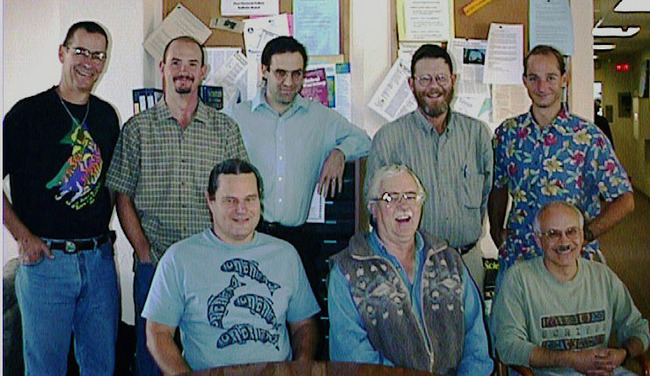NCEAS Working Groups
Ecological implications of alternative fishing strategies for apex predators
Project Description
We ask support to a working group that will develop modeling tools intended to set alternative fishing practices in an ecosystem context for the yellowfin tuna fishery pursued in the eastern Pacific Ocean (EPO). We ask NCEAS to serve as the primary sponsor of this effort and offer joint sponsorship through the auspices of the Inter-American Tropical Tuna Commission (IATTC) based in La Jolla, California. We propose to incorporate historical and recent data from the EPO with a new spatially-explicit version of the Ecosim model. The effort will involve three phases: an initial development of the model, rigorous evaluation of that through collaboration with key scientists external to the working group, and a workshop held in collaboration with representatives of conservationist groups and fisheries agencies which will evaluate the policy options pertinent to development of sustainable fishery goals. The EPO is an ideal system to develop this approach, first because the data availability rivals that of any pelagic system in the world, and second because the three fishing strategies used by the EPO tuna fishery impact the ecosystem in markedly different ways, more so than in other comparable systems. An NCEAS working group will maximize the potential to create a tractable method of addressing ecological interactions of the scale pertinent to a pelagic, open-ocean food web. The results will provide a basis for developing strategies to address urgent fisheries by catch issues set in an ecological context.

Principal Investigator(s)
Robert J. Olson, James F. Kitchell
Project Dates
Start: January 16, 1998
completed
Participants
- Kerim Aydin
- University of Washington
- Lisa Ballance
- NOAA, National Marine Fisheries Service (NMFS)
- Christofer H. Boggs
- NOAA, National Marine Fisheries Service (NMFS)
- Richard B. Deriso
- University of California, San Diego
- Elizabeth Edwards
- NOAA, National Marine Fisheries Service (NMFS)
- Timothy E. Essington
- University of Wisconsin
- Paul Fiedler
- NOAA, Southwest Fisheries Science Center
- Robert C. Francis
- University of Washington
- Marco Garcia
- University of California, San Diego
- Martin Hall
- University of California, San Diego
- James F. Kitchell
- University of Wisconsin, Madison
- Robert J. Olson
- University of California, San Diego
- Jeffrey Polovina
- NOAA, Southwest Fisheries Science Center
- Stephen Reilly
- NOAA, Southwest Fisheries Science Center
- Carl J. Walters
- University of British Columbia
- George Watters
- University of California, San Diego
Products
-
Presentations / 2000
Ecological consequences of alternative fisheries: Examples from yellowfin tuna (Thunnus albacares) in the Pacific Ocean
-
Journal Article / 2001
The von Bertalanffy growth function, bioenergetics, and the consumption rates of fish
-
Journal Article / 2004
Getting the right answer from the wrong model: Evaluating the sensitivity of multispecies fisheries advice to uncertain species interactions
-
Journal Article / 2004
Predator-dependent functional responses and interaction strengths in a natural food web
-
Presentations / 1999
An ecosystem model for the tropical eastern Pacific Ocean: Review of progress
-
Report or White Paper / 1999
Report of the Bycatch Working Group. Part 2, Working group on ecological studies and modeling
-
Report or White Paper / 1999
Working Group: Ecological Implications of Alternative Fishing Strategies for Apex Predators
-
Presentations / 2001
Interactive effects of climate and fishing on the eastern tropical Pacific pelagic ecosystem
-
Presentations / 2002
The pelagic ecosystem in the eastern tropical Pacific Ocean: A modeling approach
-
Journal Article / 2003
A model of the pelagic ecosystem in the eastern tropical Pacific Ocean
-
Presentations / 2002
Tradeoffs and tuna fisheries in the eastern tropical Pacific
-
Journal Article / 2003
Physical forcing and the dynamics of the pelagic ecosystem in the eastern tropical Pacific: Simulations with ENSO-scale and global-warming climate drivers
